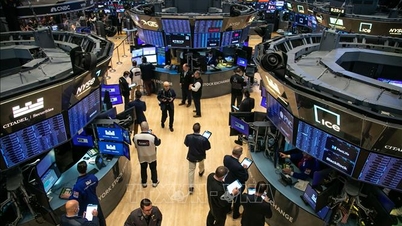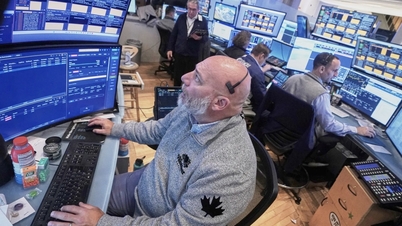
As of the close of trading on November 21 (local time), the S&P 500 and the Nasdaq Composite technology index had fallen 4% and 7%, respectively, from their peaks in late October, despite a slight recovery over the weekend. After a strong rally since April thanks to the AI craze and expectations of lower interest rates, the market's euphoria has given way to caution.
Eric Kuby, chief investment officer at North Star Investment Management, said the market is heading into a volatile holiday season, and he said the Fed’s failure to cut interest rates and other fears could make the end of the year much more difficult than previously expected.
However, many experts believe a correction is necessary for the market, especially after the S&P 500 index rose 38% from its April low to the end of October. Keith Lerner, chief investment officer at Truist Advisory Services, pointed out that the recent decline marked the first time the index had fallen 5% from its peak in 149 days - an unusually long period compared to the average cycle of 77 days since 2010. Mr. Lerner said the market is resetting high expectations and this trend is likely to continue as investors become more skeptical about the market outlook.
In terms of valuation, the S&P 500's price-to-earnings ratio (P/E) for the next 12 months has fallen to 21.8 from 23.5 a month ago, but that's still significantly higher than the 10-year average of 18.8. Notably, analysts at JPMorgan note that retail investors are showing signs of fatigue and are no longer interested in the "bottom-fishing" strategy of previous sell-offs.
A key risk factor is whether the Fed cuts interest rates at its December 9-10 meeting. September employment data painted a mixed picture, with job growth improving but unemployment hitting a four-year high. Yung-Yu Ma, chief market strategist at PNC Financial Services, said the market is unlikely to change course until the Fed has a clear path to rate cuts. But he predicted that may not happen this year.
Tech stocks, which have led the bull market for the past three years, are now at the center of the selloff. Even strong results from chip giant Nvidia were not enough to calm the market. Investors are nervous and need time to recover, said Don Nesbitt, senior portfolio manager at brokerage F/m Investments.
However, history shows that December is typically the third-best month of the year for US stocks, with the S&P 500 posting a 1.28% gain since 1928. Sam Stovall, chief strategist at investment research firm CFRA, noted that in years where November – historically the strongest month – saw a decline, December has typically seen a stronger rebound, with gains nearly double the historical average.
Some investors are starting to see opportunities in the current environment. Mr. Nesbitt said the information technology sector has become more attractive after the decline in valuations. Jack Ablin, chief investment officer at financial services firm Cresset Capital, agreed, saying investors are reluctant to sell in December to avoid taxes. Instead, they want to move into the market and look for new investment opportunities.
Source: https://baotintuc.vn/thi-truong-tien-te/ap-luc-kep-de-nang-len-chung-khoan-my-khi-buoc-vao-mua-le-hoi-cuoi-nam-20251124063159476.htm



![[Photo] Next to the "mountain of trash" after the flood, Tuy Hoa residents strive to rebuild their lives](/_next/image?url=https%3A%2F%2Fvphoto.vietnam.vn%2Fthumb%2F1200x675%2Fvietnam%2Fresource%2FIMAGE%2F2025%2F11%2F24%2F1763951389752_image-1-jpg.webp&w=3840&q=75)




























![[Photo] Prime Minister concludes trip to attend G20 Summit in South Africa](/_next/image?url=https%3A%2F%2Fvphoto.vietnam.vn%2Fthumb%2F1200x675%2Fvietnam%2Fresource%2FIMAGE%2F2025%2F11%2F24%2F1763944494358_vna-potal-thu-tuong-ket-thuc-chuyen-tham-du-hoi-nghi-thuong-dinh-g20-tai-nam-phi-8428321-4810-jpg.webp&w=3840&q=75)








































































Comment (0)